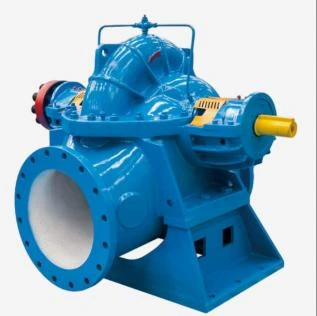Malayalam
- Afrikaans
- Albanian
- Amharic
- Arabic
- Armenian
- Azerbaijani
- Basque
- Belarusian
- Bengali
- Bosnian
- Bulgarian
- Catalan
- Cebuano
- Corsican
- Croatian
- Czech
- Danish
- Dutch
- English
- Esperanto
- Estonian
- Finnish
- French
- Frisian
- Galician
- Georgian
- German
- Greek
- Gujarati
- Haitian Creole
- hausa
- hawaiian
- Hebrew
- Hindi
- Miao
- Hungarian
- Icelandic
- igbo
- Indonesian
- irish
- Italian
- Japanese
- Javanese
- Kannada
- kazakh
- Khmer
- Rwandese
- Korean
- Kurdish
- Kyrgyz
- Lao
- Latin
- Latvian
- Lithuanian
- Luxembourgish
- Macedonian
- Malgashi
- Malay
- Malayalam
- Maltese
- Maori
- Marathi
- Mongolian
- Myanmar
- Nepali
- Norwegian
- Norwegian
- Occitan
- Pashto
- Persian
- Polish
- Portuguese
- Punjabi
- Romanian
- Russian
- Samoan
- Scottish Gaelic
- Serbian
- Sesotho
- Shona
- Sindhi
- Sinhala
- Slovak
- Slovenian
- Somali
- Spanish
- Sundanese
- Swahili
- Swedish
- Tagalog
- Tajik
- Tamil
- Tatar
- Telugu
- Thai
- Turkish
- Turkmen
- Ukrainian
- Urdu
- Uighur
- Uzbek
- Vietnamese
- Welsh
- Bantu
- Yiddish
- Yoruba
- Zulu
Telephone: +86 13120555503
Email: frank@cypump.com
ഡിസം . 01, 2024 22:06 Back to list
single suction vs double suction pump
Single Suction vs. Double Suction Pumps A Comprehensive Overview
When it comes to fluid transfer and pumping solutions, two primary designs dominate the industry single suction and double suction pumps. Each type has its own set of applications, advantages, and disadvantages, influencing their choice based on the specific requirements of a project. Understanding the differences between these two types of pumps is essential for engineers, designers, and anyone involved in the selection of pumping systems.
Definition and Basic Principles
Single Suction Pumps feature a single inlet that draws fluid into the pump. This design usually involves a centrifugal pump mechanism where fluid enters from one side of the impeller and is propelled outward through the pump casing. These pumps are straightforward in design and are typically used for lower flow rates and applications where space is a limitation.
On the other hand, Double Suction Pumps are designed with two inlets, allowing fluid to enter from both sides of the impeller. This design enables the pump to handle larger volumes of fluid and is generally more effective in applications requiring higher flow rates. The dual inlet configuration helps to balance the hydraulic forces on the impeller, reducing radial loads and improving efficiency.
Advantages of Each Type
Single Suction Pumps have several notable advantages 1. Simplicity The design is less complex, leading to easier maintenance and lower manufacturing costs. 2. Space Efficiency Single suction pumps are usually more compact, making them suitable for environments with limited installation space. 3. Cost-Effectiveness Due to their simpler design, single suction pumps generally come at a lower price point, making them appealing for budget-conscious projects.
Conversely, Double Suction Pumps offer significant benefits, particularly in larger applications 1. Higher Flow Rates The dual inlet system allows for increased flow rates, making these pumps ideal for industrial applications and large-scale fluid transfer. 2. Lower Vibration and Noise The balanced impeller design reduces vibration and noise levels, contributing to a more stable operation. 3. Increased Efficiency The hydraulic balance provided by the dual suction can lead to improved overall efficiency, particularly in high-capacity setups.
single suction vs double suction pump

Disadvantages and Limitations
However, both types of pumps also come with their limitations. Single Suction Pumps may struggle in high-flow applications due to the limitation of a single inlet, leading to a potential increase in wear and tear. Their motor power can also be higher under certain operating conditions, affecting operational costs.
On the other hand, Double Suction Pumps tend to be more expensive and can require more complex installation procedures due to their larger size and dual inlet design
. While they excel in high flow scenarios, they may not be as efficient in low flow applications, where the additional complexity does not provide practical benefits.Applications
The choice between a single suction and double suction pump often hinges on the specific application. Single Suction Pumps are commonly used in residential and commercial settings, such as in municipal water supply systems and small-scale irrigation. They are favored in applications where flow demands are moderate and the space for installation is restricted.
In contrast, Double Suction Pumps are frequently used in larger industrial settings, such as power plants, large water distribution systems, and heavy manufacturing processes. Their ability to handle large volumes and provide more stable operations makes them suitable for high-demand environments.
Conclusion
Ultimately, the choice between single suction and double suction pumps depends on various factors, including application requirements, space constraints, budget, and desired efficiency. By comprehensively understanding the strengths and weaknesses of each pump type, engineers and decision-makers can make informed choices that optimize performance while ensuring reliability. Whether opting for the straightforward design of a single suction pump or the robust, high-capacity capabilities of a double suction pump, the correct selection is pivotal in achieving successful fluid transfer solutions.
-
Heavy-Duty Mining Sludge Pumps - Wear-Resistant Slurry Handling
NewsAug.02,2025
-
Horizontal Split Case Pump with GPT-4 Turbo | High Efficiency
NewsAug.01,2025
-
ISG Series Pipeline Pump - Chi Yuan Pumps | High Efficiency, Durable Design
NewsAug.01,2025
-
Advanced Flue Gas Desulfurization Pump with GPT-4 Turbo | Durable & Efficient
NewsJul.31,2025
-
ISG Series Vertical Pipeline Pump - Chi Yuan Pumps | Advanced Hydraulic Design&Durable Construction
NewsJul.31,2025
-
ISG Series Vertical Pipeline Pump - Chi Yuan Pumps | Energy Efficient & Low Noise
NewsJul.31,2025










